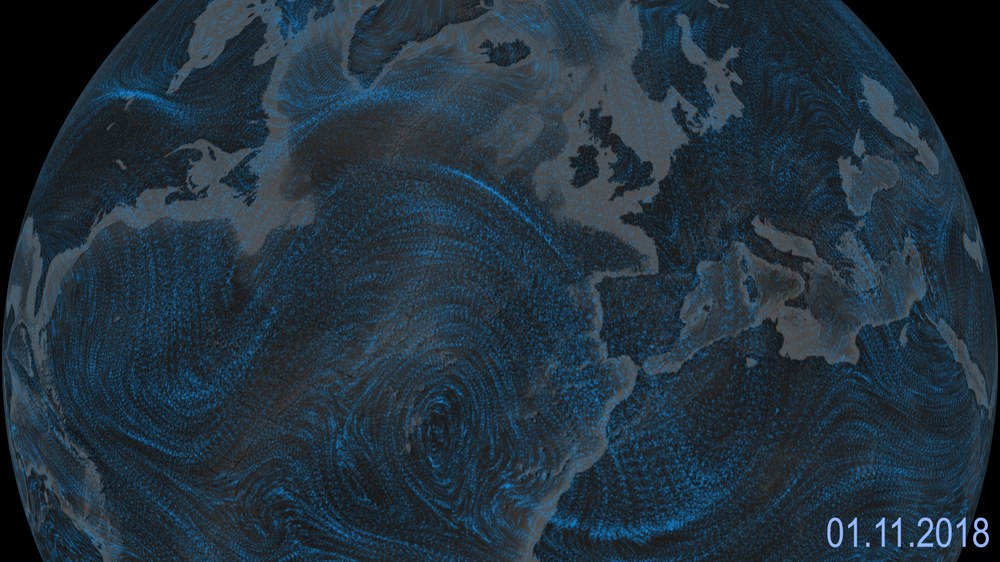More extreme events in the future due to changes in the stratosphere?
In the past few weeks cool, moist air masses from the north led to heavy snowfall in the Alps (see the animation). This would not have been, in principle, an unusual weather situation if it had not persisted so long. In February/March of last year there was also lots of snow in eastern Europe and it was particularly cold as well. The reason for extreme events of this type could be changes in the stratosphere. EOC researchers expect this to be more often the case in the future.

More extreme events in the future due to changes in the stratosphere?
Your consent to the storage of data ('cookies') is required for the playback of this video on Quickchannel.com. You can view and change your current data storage settings at any time under privacy.
Above the troposphere, where our weather takes place, the stratosphere is situated at an altitude of about 10 to 50 kilometres. At this altitude strong wind currents arise in winter all around the world in the polar regions. This band of wind is caused by compensating airflows between the equator and the poles. When this equalization between north and south takes place, it produces a strong band of wind moving from west to east, the polar vortex. It is caused by the Coriolis force. Since Earth's rotation results in equatorial regions moving faster than polar regions, the packets of wind there are given such a "push" eastward that a westward drift is generated. Air masses are isolated within the forming polar vortex, where they can get very cold. Disruptions cause this polar vortex, which starts out ring-shaped, to become wavy. These "planetary waves" are responsible for the constant changes in our basic weather situation, and in winter they can also bring ice cold polar air from the centre of the polar vortex to Europe.
In the atmosphere there is a whole range of waves moving at various speeds over our heads. If they overlap so that they increase in intensity they can build themselves up enough to finally cause the planetary waves to break. The wave energy that is consequently released leads to a warming of the stratosphere. Spontaneously, within just a few days, temperatures increase by more than 50 degrees centigrade in the polar stratosphere at about 20-40 kilometres altitude. The polar vortex is massively disturbed by the collapse of planetary waves, and that can also affect the weather in the troposphere.
Such warming of the stratosphere was also observed in February 2018, when the high level of wave activity existing around 7 February 2018 decreased considerably (see Figure 1).

The released energy and the impulse caused by the collapse weakened, shifted and ultimately split the polar vortex. The two independent vortices moved southward and took a long time to reunite. Such vortex fragments can survive for quite a while over the same region and lead to extreme weather events. Figure 2 shows how the polar vortex split apart in the beginning of this year.

However, a warming of the stratosphere may not always bring cold and snow to Europe. That depends on the region over which the two low pressure formations are hovering.
At present temperatures at the poles are increasing much more than those at equatorial regions. The temperature difference between north and south is decreasing by about 0.7 Kelvin (or centigrade) per decade (see Figure 3).

This leads to changes in the conditions for stimulating and stretching planetary waves. An EOC analysis covering the past 40 years shows an increase in wave activity in the stratosphere. Accordingly, EOC scientists expect stratosphere warming to occur more often in the future. The connection between extreme weather events and planetary waves is being investigated in more detail in WAVE, a project supported by the Bavarian State Ministry of the Environment and Consumer Protection.
